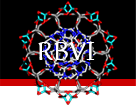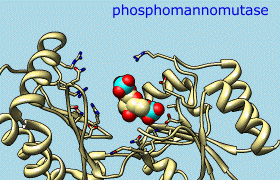

 about
projects
people
publications
resources
resources
visit us
visit us
search
search
about
projects
people
publications
resources
resources
visit us
visit us
search
search
Quick Links
Recent Citations
Correlation between solvation free energy and solute-solvent interaction energy in energy representation theory. Maruyama Y, Matubayasi N. J Phys Chem B. 2025 Dec 25;129(51):13230-13241.
Structural snapshots capture nucleotide release at the μ-opioid receptor. Khan S, Tyson AS et al. Nature. 2025 Dec 18;648(8094):755–763.
Bottom-up design of Ca2+ channels from defined selectivity filter geometry. Liu Y, Weidle C et al. Nature. 2025 Dec 11;648(8093):468–476.
Molecular insights into species-specific ACE2 recognition of coronavirus HKU5. Zhang Y, Li Y et al. Nat Commun. 2025 Dec 4;16(1):10889.
Structural and functional characterization of a metagenomically derived γ-type carbonic anhydrase and its engineering into a hyperthermostable esterase. Bodourian CS, Imran M et al. Protein Sci. 2025 Dec;34(12):e70396.
Previously featured citations...Chimera Search
Google™ SearchNews
December 25, 2025

|
September 22, 2025
Mac users may wish to defer upgrading to MacOS Tahoe. Currently on that OS the Chimera graphics window is shifted so that it covers the command and status lines.
March 6, 2025
Chimera production release 1.19 is now available, fixing the ability to fetch structures from the PDB (details...).
Previous news...Upcoming Events

UCSF Chimera is a program for the interactive visualization and analysis of molecular structures and related data, including density maps, trajectories, and sequence alignments. It is available free of charge for noncommercial use. Commercial users, please see Chimera commercial licensing.
We encourage Chimera users to try ChimeraX for much better performance with large structures, as well as other major advantages and completely new features in addition to nearly all the capabilities of Chimera (details...).
Chimera is no longer under active development. Chimera development was supported by a grant from the National Institutes of Health (P41-GM103311) that ended in 2018.
Feature Highlight

Different conformations and even different proteins can be compared by morphing from one structure to another. Users can specify the method of coordinate interpolation and how many intermediate structures should be generated. The result is displayed in Chimera's trajectory viewer, MD Movie. The morph can then be saved in coordinate form or recorded as an animation. See also: Animation Gallery
(More features...)
Gallery Sample

Peroxiredoxins are enzymes that help cells cope with stressors such as high levels of reactive oxygen species. The image shows a decameric peroxiredoxin from human red blood cells (Protein Data Bank entry 1qmv), styled as a holiday wreath.
See also the RBVI holiday card gallery.
About RBVI | Projects | People | Publications | Resources | Visit Us
Copyright 2018 Regents of the University of California. All rights reserved.